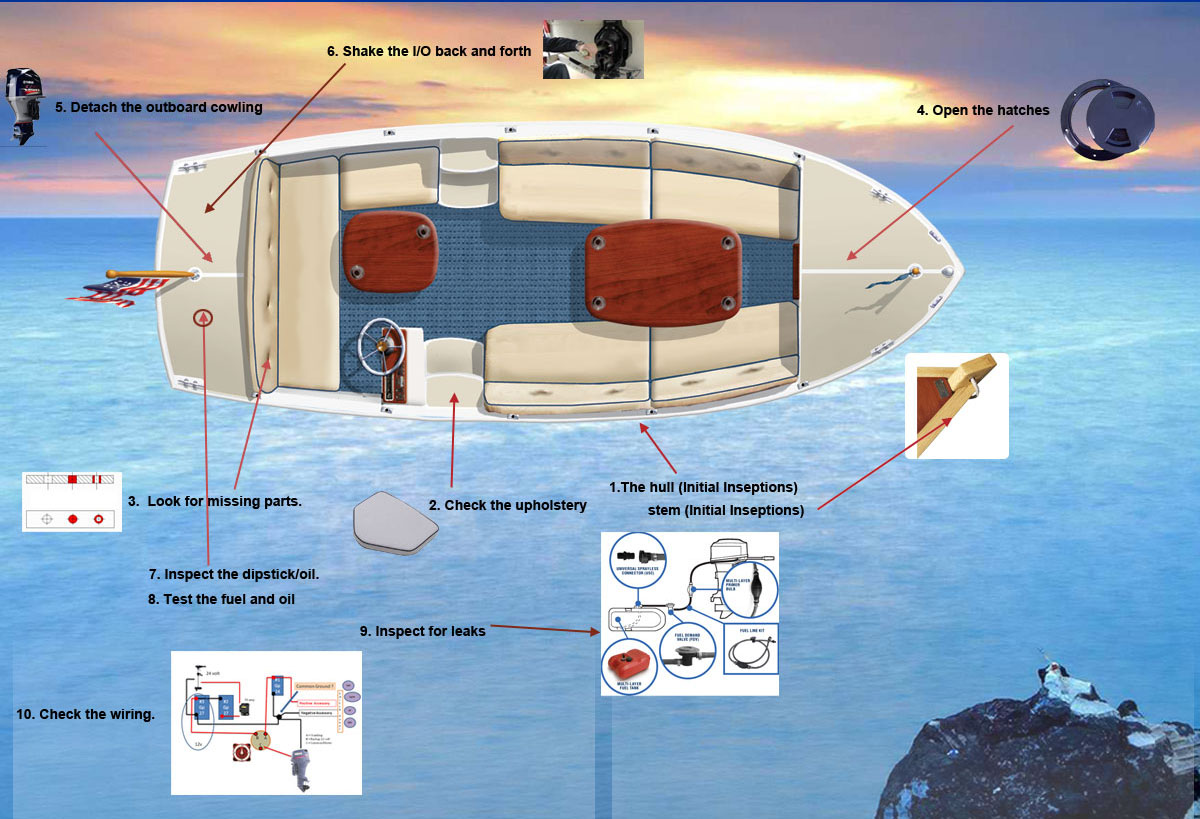Graphic Anatomy of a Boat
Your 10 Minute Boat Inspection

At auctions, everyone wants to seize a good deal. It's important to make sure you learn as much as possible about boats and ensure you aren't buying into a money pit. Here is a checklist for inspecting a used boat for sale in 10 short minutes before making an offer.
- Initial Inspection. The hull, stem, chines and strakes will suffer the brunt of any collision and show cracks best. Take a look at these with emphasis on the stem and look for unusual stress-crack patterns. Any open cracks need to be repaired before you go out again.
- Check the upholstery. The underside of cushions should be checked for green algae at the seams. This is a sign of more extreme fungal or plant growth hidden in the foam.
- Look for missing parts. Empty screw or bolt holes that look like they were once holding something, bunches of exposed wires peeking out of neatly cut holes, and faded lines of undercoating that were some decorative strip are sure- fire signs that boat has been stripped.
- Open the hatches. Smelling gas or seeing water is a sure sign of a problem.
- Detach the outboard cowling. Signs of seepage will appear as dry white "curtains," past the head gasket. Make sure the shift and throttle linkages are greased and show no corrosion. Additionally, their springs should snap back.
- Shake the I/O back and forth. If you find a lot of flex, consider changing the gimbal bearings. The seals and gaskets should be checked for leaks. Turn the wheel and operate the trim/tilt to check for full range of motion.
- Inspect the dipstick/oil. If it smells burned, looks milky, has water in it, is black or the wrong viscosity, make sure it the oil is changed. The drive belt and the serpentine belt should be checked. While one quarter-inch deflection is normal, more may indicate improper installation or excessive deterioration.
- Test the fuel and oil. Today's ethanol "enhanced" gasoline invites moisture, which separates in the fuel tank. Water is detrimental when sucked into an engine. Water in oil is the sign of a cracked block. Gauging paste will change color when exposed to water.
- Inspect for leaks. Because ethanol is so corrosive, the fuel lines and gas tank could have leaks if the previous owner let the boat sit for too long with gas in the tank.
- Check the wiring. Ideally, look for Shrink-sealed butt connectors. Beware of hazards such as bare wire and terminations that are twisted together or covered with electrical tape. Inspect around the motor and under the dash for deterioration.

Email
Facebook
On LinkedIn
To Pinterest
Your Followers